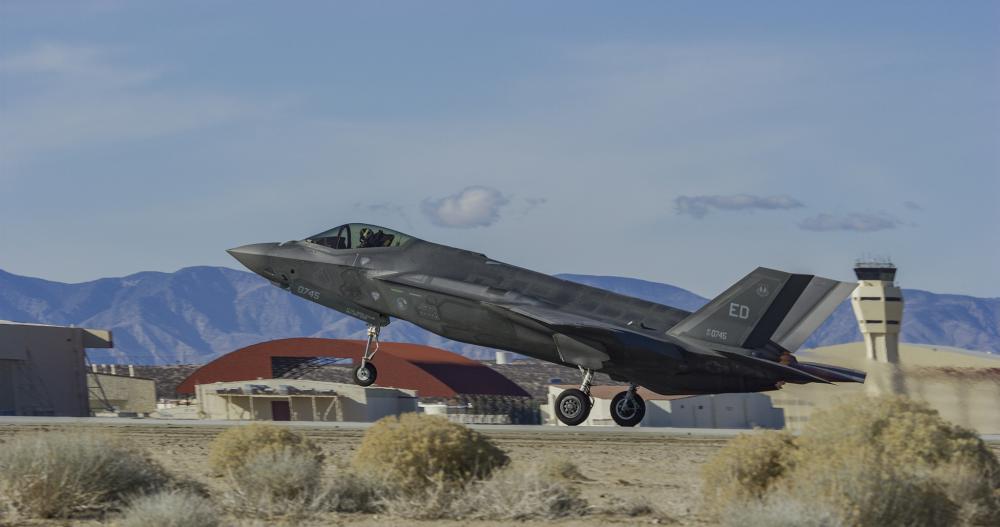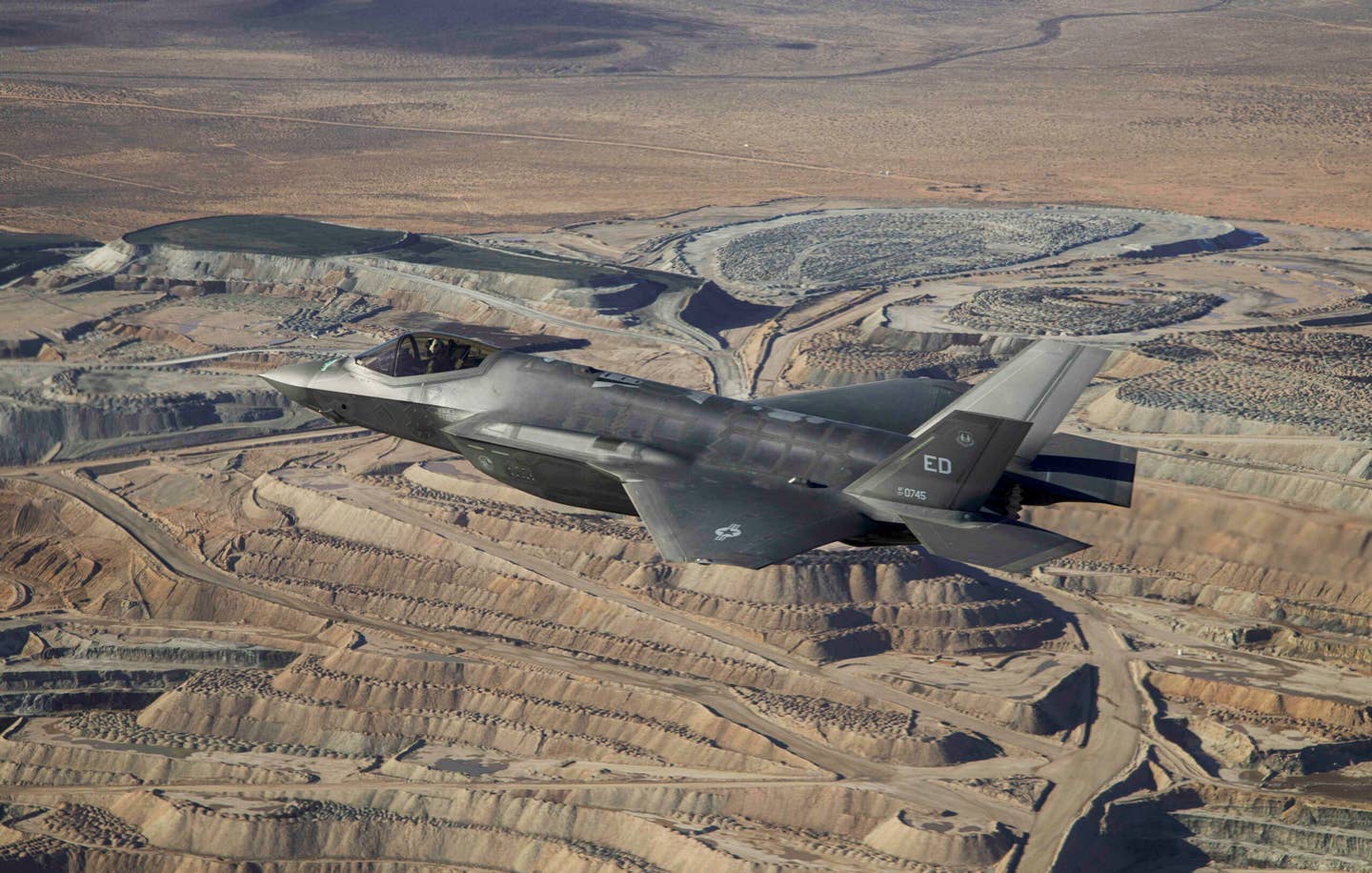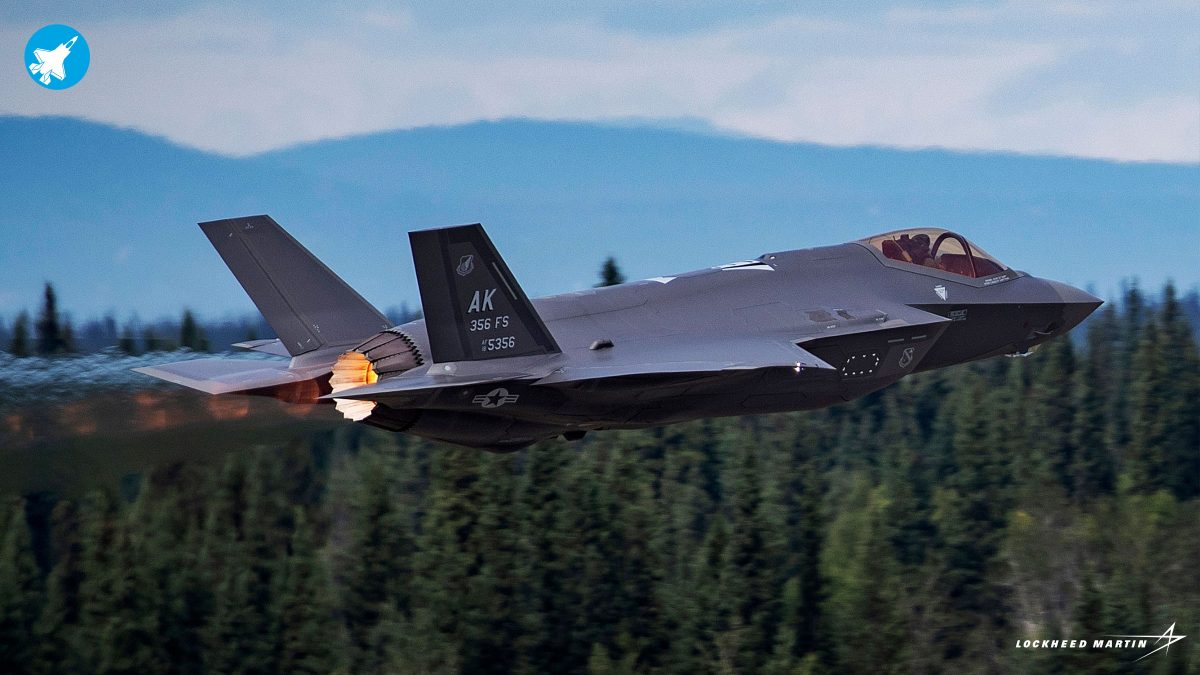US Air Force (USAF), on January 6, conducted the first test flight of an F-35 in the new Technology Refresh 3 (TR-3) configuration, which includes a series of upgrades to the stealth fighter’s computer memory and processing power and lay the groundwork for equipping the type with all the new capabilities under a significant modernization effort known as Block 4.
Battle Of ‘Best Dogfighters’: US-Origin F-15 Fighters To ‘Challenge’ Russian-Origin Sukhoi Flankers In Japan Drills
As per the statement by the F-35 Joint Program Office (JPO), the 461st Flight Test Squadron (FTS) at Edwards Air Force Base, California, conducted the test flight of an F-35A, with the tail number AF-7, as a specially instrumented flight test aircraft and the first with TR-3 upgrades installed.
The test flight lasted 50 minutes and was undertaken by USAF experimental test pilot Maj. Ryan Luersen. He flew the AF-7 above the Mojave Desert up to an altitude of 35,000 feet and at nearly Mach speed – a velocity just below the speed of sound.
The test flight, known as a functional check flight profile, was meant to “verify aircraft airworthiness and system stability” of TR-3 aboard the F-35, explained the JPO. It served as only the beginning of flight evaluations with TR-3, as the JPO added that developmental and operational tests would continue through 2023.
“This is a significant achievement for the F-35 program. TR-3 is the F-35’s critical computer processing electronics upgrade that will continue to provide all our pilots with the capability they need to be successful against any adversary.
There is still a lot of work to do, and I am confident that our industry partners and government team will get the job done,” said Air Force Lt. Gen. Mike Schmidt, executive program officer for the F-35 JPO.

TR-3 Configuration And Block 4 Upgrade Program
TR-3 (Technology Refresh-3) is the initiative to enhance F-35’s core processor to attain 25 times more computing power, its memory unit, and its panoramic cockpit display system.
This will be a step up from the aircraft’s current computing system, TR-2, which is considered inadequate to support the powerful capabilities that the Block 4 upgrade program will bring to the F-35 platform, a majority of which are software-based.
“Technology Refresh 3 modernizes the computational core of the F-35 air vehicle. Therefore, new TR-3 hardware and software affect nearly every aircraft feature. Today’s event was just the start of a comprehensive flight test campaign that will verify and improve the safety, stability, and performance of the entire F-35 weapon system in this new configuration,” said Air Force Lt. Col. Christopher Campbell, commander of the 461st FTS and director of the F-35 Integrated Test Force.

Experts describe TR3 as a brand-new laptop with a new display, better graphics, and a new processor inside, which makes it function faster, with terabytes of storage and memory. The Block 4 upgrades are like the programs, applications, and outcomes that fill a computer.
Block 4 upgrade consists of some 53 improvements aimed at countering both air-and ground-based threats emerging from China and Russia.
While some of these Block 4 upgrades remain confidential, others are known to include a new active electronically scanned array (AESA) radar designated as AN/APG-85, a major upgrade to the jet’s Distributed Aperture System (DAS) and Electro-Optical Targeting System (EOTS), and the integration of a host of new weapons like the GBU-53/B StormBreaker precision-guided bomb, British weapons such as the ASRAAM and Meteor air-to-air missiles, Turkey’s Standoff Missile and Norway’s Joint Strike Missile, etc.
Block 4 will bring 13 electronic warfare updates, seven interoperability and networking changes, seven cockpit and navigation upgrades, 11 radar and electro-optical system enhancements, and eight logistics and support changes.
Apart from those improvements, which will be common to all variants, some updates will be specific to certain variants according to unique service requirements. For example, the US Navy wants its F-35Cs to be able to launch the Joint Standoff Weapon (JSOW) C1 version.
The F-35 has four primary missions: air superiority, suppression or destruction of enemy air defenses (known as SEAD and DEAD), close air support, and strategic attack against high-value stationary or mobile targets.
The current Block 3F can fulfill all four of those missions. However, Block 4 will also add a fifth primary mission called ‘extended surface warfare,’ which involves enhancing radar capabilities for maritime surveillance, identification, and targeting, as marine surface and land surface poses two different problems, according to Retd. Vice Adm. Mathias W. Winter, formerly an F-35 Program Executive Officer.
Delays And Prohibitive Costs Of Block 4 Upgrade
Block 4 has been delayed due to complexities in the development of the TR-3, which have also amounted to a $330 million increase in the F-35’s development costs, according to a report by the Government Accountability Office (GAO) last year. The Block 4 development is three years late and will continue until 2029.
All three variants of the F-35 will undergo this overhaul, and the first production-model version of the TR-3-installed F-35 will be rolled out in Lot 15. It will continue through Lot 17 F-35 deliveries, with Lockheed Martin hoping to commence Lot 15 deliveries by mid-2023.

It is possible that the Block 4 upgrade package could be introduced with Lot 17 variants if all goes according to the plan.
Also, even the F-35s from Lot 5 to Lot 14 is to be retrofitted with TR-3, according to the US Air Force budget justification documents for the fiscal year 2023.
The US and other F-35 operating countries are concerned that the Block 4 upgrades could cost prohibitively if Lockheed Martin and JPO decide to integrate it into older jets. So far, Lockheed Martin has delivered over 890 F-35s of all types to various customers. The cost of upgrading even a portion of these older models to the TR-3 configuration with at least some Block 4 capabilities would probably be very high.
That said, Lockheed and the Pentagon have recently finalized a colossal contract worth $30 billion for delivering up to 389 modernized fighter F-35 jets to the US military and international customers. The order comprises 145 Lot 15s, 127 Lot 16s, and the option for 126 Lot 17s to be delivered to Finland, Belgium, and Poland.
Also, Canada recently signed its deal to procure 88 Block 4 F-35s to replace its aging CF-18 Hornets, with the first deliveries expected in 2026.
- Contact the author at tanmaykadam700@gmail.com
- Follow EurAsian Times on Google News




